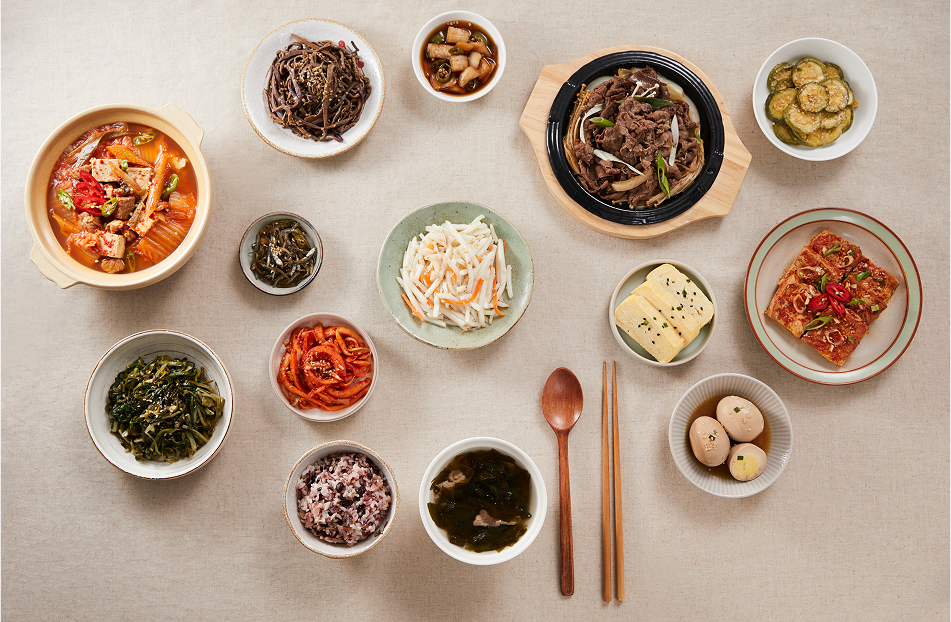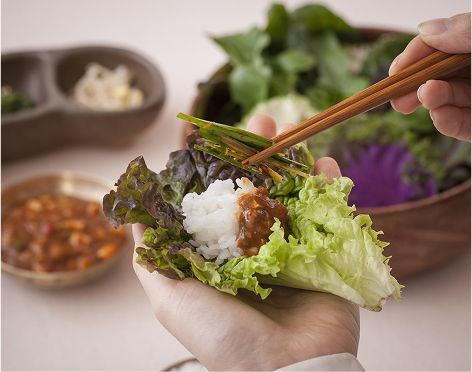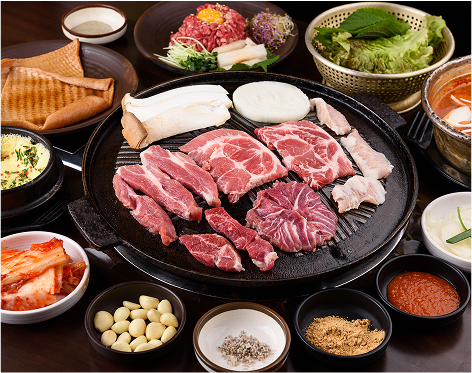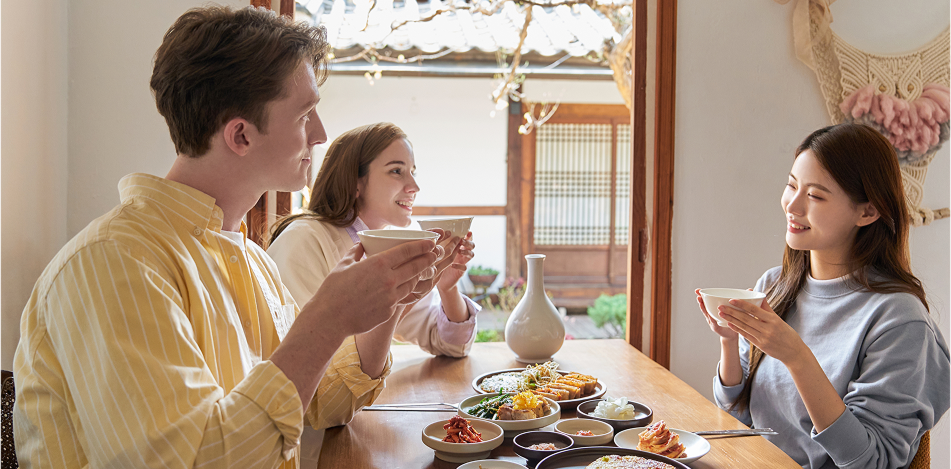Korean food encompasses everything Koreans have eaten for generations. Rice and soup, stews, side dishes, kimchi, seasoned vegetables, greens, grilled dishes... When you see the colorful array of dishes spread across a table, Korean cuisine feels less like “one flavor” and more like “a harmony of diverse tastes.” This diversity stems from the geographical and historical context of Korean food.
In many ways, Korean cuisine is a “culture of mixing.” The essence of Korean food lies in the harmonious interplay of flavors that dance together in your mouth. Sometimes within a single bowl, sometimes moving between multiple dishes, each person creates their unique combinations. The dish that best embodies the definition of Korean food is Bibimbap. This dish—warm rice topped with various garnishes and Gochujang, all mixed together—isn't just a famous menu item, but feels like the philosophy of Korean cuisine in action. The way it embraces everything, brings it together, and creates flavor.
A Korean Meal Table
While Korean food sometimes harmoniously combines all ingredients in one bowl, like Bibimbap, it's more commonly served as multiple dishes made with different ingredients, each served on small plates arranged on what is called a “Sang,”—a dedicated dining table. Korean meals typically follow a format of various side dishes arranged across a “Sang.” This arrangement is called “Han Sang Charim.”

This arrangement follows certain principles. First, rice and soup, along with spoons and chopsticks, are placed directly in front of the diner. Beyond that, the main dish takes its place, with seafood, meat, and vegetable dishes arranged around it. Kimchi is never missing. This “Sang” arrangement is believed to have a history spanning thousands of years.
On this “Han Sang,” stir-fried dishes, kimchi, braised items, and more are placed alongside rice in no particular order. These are called “banchan” (side dishes). How you eat them is entirely up to you. You choose which foods to combine with each spoonful of rice. There's no problem eating two or three things at once. Thus, by the end of finished a bowl of rice, while diners received the same food, they had essentially eaten completely different meals.
A Bite of Korea: Salad, Leaf Wraps & Korean BBQ

“Namul” (salad), seasoned vegetables that capture the pure taste of each season, are indispensable side dishes on Korean tables. Koreans excel at transforming vegetables, mushrooms, and various other ingredients into these banchan, known as namul (salad). Made with seasonal ingredients using diverse seasonings and cooking methods, namul (salad) appear as an essential side dish everywhere—from home cooking to Korean restaurants, temple food, and Baekban-jip (ordinary street restaurants that serve rice with side dishes.)
Namul (salad), together with “Ssam,” form the foundation of healthy Korean cuisine. Ssam is a unique Korean food culture where you place meat on fresh vegetables, such as lettuce or perilla leaves, add Ssamjang (a sauce made by mixing red chili and soybean paste with minced garlic, scallions, sesame oil, and more), and eat it all in one bite. Important tip! You need to open your mouth wide and pop it all in at once to eat like a Korean.

You can enjoy Ssam anytime at the “Gogi-jip” (meat restaurants) you'll come to love. Korean Gogi-jip aren't just restaurants—they're a culture. You grill meat directly at your table and eat it with various side dishes, stews, and noodles. Most tables have ventilation systems that suck up the smoke, so you can dine without worrying about meat smells. Some places have staff grill the meat for you, and when they say “Now you can eat!” you can immediately wrap up your Ssam and enjoy a generous mouthful.
Among all Korean meat dishes, the most popular is Samgyeopsal (grilled pork belly). Samgyeopsal (grilled pork belly) is a pork dish so beloved that it could be called the “people's food.” Samgyeopsal (grilled pork belly) restaurants are ubiquitous and easily accessible, making it comfortable for anyone to visit. These days, “Yajang” (outdoor barbecue spots) with tables set up outside shops are also gaining popularity.
Korean barbecue makes everything special—the fun of grilling meat, the joy of wrapping Ssam, and even the Doenjangjjigae (Soybean Paste Stew) or fried rice you enjoy to finish the meal. It might seem complicated, but don't worry. Staff are always ready to help. When you want to order more or have questions, just call out: “Yeogiyo!” (Excuse me!)
Visiting a Korean Restaurant

Korea is home to a diverse range of cuisines from around the world. Chinese food, of course, but also hamburgers and sandwiches, Korean-style bakeries, Japanese restaurants, Western cuisine, and unique dishes created by Southeast Asian immigrants have all found their place throughout Korea. One special thing about Korean dining! While chopsticks are the star in many Asian regions, at Korean tables, the spoon takes center stage. Spoons serve multiple purposes—eating rice and soup, doing the “mixing,” and even cutting or moving food. If you find chopsticks difficult to use, it's perfectly fine to use your spoon alongside them.
At Korean restaurants, there's no need to tip, and requests for extra water or side dishes don't incur additional charges. Recently, more and more restaurants are adopting self-service systems where you get your own water and side dishes, or use unmanned ordering machines. At regular restaurants that don't follow this format, staff will kindly help you, so relax and enjoy your meal with peace of mind.

